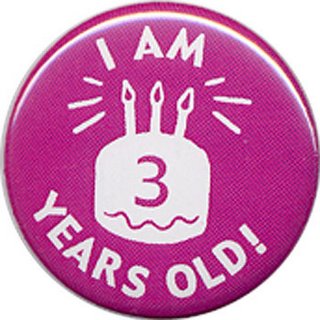I launched my blog exactly 3 years ago, 11-8-2009. In my wildest dreams, I never expected to attract so many loyal readers — there are now 10K+ of you — nor did I realize how much I would enjoy blogging. So, with a huge shout-out to those of you who have encouraged me in person and online to keep on writing, I thought I’d celebrate my blog’s 3rd birthday by reaffirming its purpose.
Perhaps the best place to start, as always, is with the results we’re trying to achieve, working backwards from there to figure what must get done, how, when and by whom, in order to achieve those results. In my professional life, the results we’re trying to achieve are specific organizational outcomes through improved human resource management (HRM). But what is HRM?
HRM is a business domain, a collection of processes and business rules whose purpose is to help ensure long-term business and organizational success. HRM is about planning for, organizing, acquiring, deploying, assessing, rewarding, leading, coaching, supporting, informing, equipping, retaining, and developing a high performance, cost-effective workforce. It is also about nurturing the growth, usage and value of the organization’s intellectual capital and personal networks.
What a mouth full, and there’s more. HRM isn’t just the work of a central/local/3rd party HR department. While an HR department and HR professionals may still lead the strategy and design of HRM, HRM execution is increasingly in the hands of managers and leaders at every level and of the increasingly technology-enabled, self-sufficient workforce.
The purpose — the expected organizational results — of HRM are to maximize the performance of the organization’s workforce and the leverage from its intellectual capital and personal networks toward achieving the organization’s stated business outcomes. If we could get all of the organization’s work done and results achieved without any workforce, we wouldn’t need HRM. But we can’t, so we do. That said, no amount of HR technology is going to move the dial on organizational performance unless it’s enabling those HRM processes and business rules that drive business outcomes. HR technology is the key enabler of HRM; but deciding what HRM processes and business rules to enable remains very much the work of HR leaders.
The Bottom Line: I will continue to push the HR technology community to deliver better software and services, at better prices, and with greater ease of implementation and adoption. I will continue to push the HR community to do the heavy lifting of understanding their businesses and how HRM should be shaped to drive improved business results. I will continue to push myself and my fellow “influencers” to be transparent, innovative, and focused on real thought leadership. You might say I’m an equal opportunity scold, but no ones gets more flak from Naomi than I give myself. Thank you so much for coming this far with me on my blogging journey.
